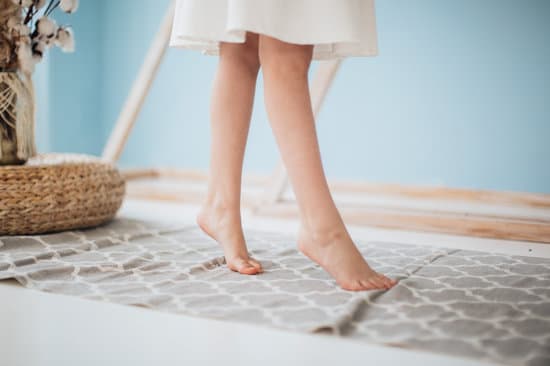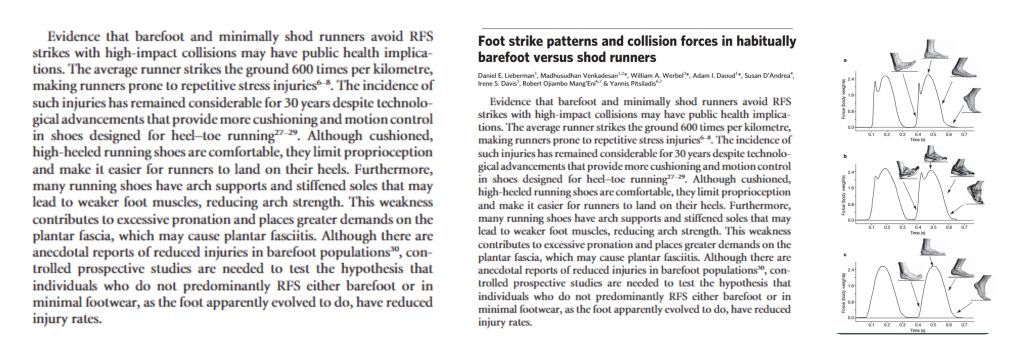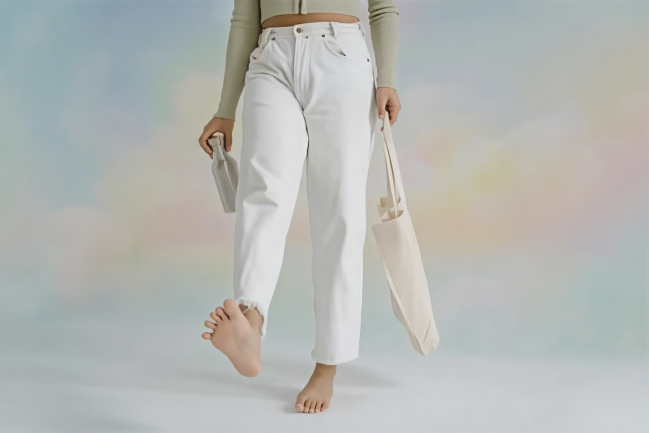Every summer, when the temperature rises and the sun becomes generous, we can’t help but want to take off our heavy shoes and socks and walk barefoot on the grass, the beach or the wooden floor, enjoying the long-lost lightness and freedom. This instinctive impulse is actually the body’s reminder to us: It’s time to regain a natural gait.
Modern people are accustomed to wearing shoes with strong support and thick soles. Although they bring short-term comfort, they gradually make our feet lose strength and sensitivity. The toes lose their grip, the arches of the feet collapse, and the way of walking is stiff… These seemingly unrelated minor problems with shoes are actually directly related to our detachment from the “natural gait”.
Summer is the golden time for us to practice our natural gait and restore the function of our feet.
1.What is a natural gait?
Natural gait refers to the walking or running pattern that the human body instinctively adopts in the absence of external disturbances (such as overly supportive shoes). Its core features include:
Forefoot/Midfoot Strike
Traditional shoes with thicker soles tend to cause people to develop the habit of “Heel Strike”, but this approach generates a greater impact force at each step, which is transmitted to the knees and hip joints.
Natural gait tends to touch the ground first with the forefoot or midfoot, using the elasticity of the arch of the foot, Achilles tendon and calf muscles to absorb the impact, making the steps lighter and smoother.
Shorter stride length and high cadence
The stride length of a natural gait is usually shorter, but the stride frequency is higher (about 170-180 steps per minute), reducing the braking force upon landing and lowering the pressure on the joints.
The active participation of the foot muscles
Modern shoes often offer excessive support, causing the muscles in the soles of the feet (such as the arch muscle group) to remain in a “dormant” state for a long time.
Natural gait requires dynamic adjustment of the foot muscles to enhance stability and balance.
The toes naturally stretch out
Traditional pointed-toe shoes squeeze the toes, while a natural gait requires the toes to stretch freely to provide better grip and propulsion.
2.The benefits of returning to a natural gait for the human body
Reduce joint impact and lower the risk of sports injuries
When the heel touches the ground first, the ground reaction force can reach 2 to 3 times the body weight. In the long term, this may cause problems such as knee pain and plantar fasciitis.
Natural gait utilizes the natural shock-absorbing mechanisms of the feet and calves to disperse the impact force and protect the joints.
Strengthen the muscles in the feet and improve balance ability
When walking barefoot or in minimalist shoes, the muscles on the soles of the feet must work actively. Long-term practice can enhance the strength of the arch of the foot and prevent flat feet.
Studies show that barefoot training can enhance Proprioception and reduce the risk of falls, which is particularly beneficial for middle-aged and elderly people.
Optimize body alignment and relieve back and waist pain
An incorrect gait may lead to anterior pelvic tilt and uneven force distribution on the spine, which in turn can cause discomfort in the lower back.
Natural gait encourages a more upright posture, naturally activating the core muscles and reducing compensatory pain.
Improve exercise efficiency and make running less strenuous.
Natural gait relies on the elastic rebound of the Achilles tendon and arch of the foot, reducing energy waste and is suitable for long-distance runners.
Many marathon runners reduce their injury rate and improve their performance by adjusting their gait.
Promote neural feedback and improve the connection between the brain and the body
The soles of the feet are covered with nerve endings. Direct contact with the ground can send richer signals to the brain and improve coordination.
Barefoot activities for children are believed to be beneficial for motor development, and adults can also benefit from them.

3.Why is summer a good time to practice natural gait?
When the weather is suitable, it’s easier to walk with less clothing or barefoot
In summer, there is no need for thick socks to keep warm. People are more willing to walk barefoot at home, on balconies, on grasslands or even in parks. Compared with winter, this season with higher freedom makes it easier for the feet to “come back online”. Even if it is not convenient to go completely barefoot outdoors, choosing a pair of barefoot shoes with extremely thin soles and a structure close to the barefoot state can still retain the true touch of the ground and protect the soles of the feet from sharp objects.
This transitional approach is both safe and highly suitable for those who are just starting to practice their natural gait.
Diverse terrains activate the foot sole perception system
The ground textures that can be touched in summer are rich and diverse: slightly hot asphalt, warm sandy ground, soft turf, moist soil… These different surfaces of the ground provide a natural stimulus to the nerves on the soles of the feet, which helps to awaken the already “dormant” sensory system. The fine-tuning response of the muscles in the soles of the feet when barefoot or wearing barefoot shoes will gradually train more flexible landing methods and balance control abilities.
This is not merely a change in walking; it is a reprogramming of the body by the brain.
With longer days, it’s easier to form new habits
In summer, there is abundant sunlight, and both early morning and dusk are good times for practice. There is no need for vigorous exercise. Just walk slowly for 10 to 20 minutes every day at home or outdoors with bare feet or barefoot shoes. Pay attention to how your feet touch the ground, whether your toes can actively grasp the ground, and whether your knees are naturally slightly bent. Gradually, you will be able to adjust to a more natural gait pattern.
Natural gait emphasizes “light landing and heavy awareness”, and what is more important than speed is the attention to the body.
It is an ideal season for overall body adjustment
In summer, people’s fascia becomes softer, blood circulation smoother, and the body is more willing to try new forms of exercise. Starting to practice a natural gait in this season can effectively relieve the stiffness of the body after prolonged sitting and also help reduce the burden on the knees, hips and spine. As the foundation of the body, once the gait is adjusted properly, the body structure will also self-repair accordingly.
Many people will be surprised to find that changing the way they use their feet can actually relax their shoulders and necks, relieve lower back pain, and even allow for deeper breathing.
Progressive practice is easier to persist in
Summer is a window period for the body to adapt to new sports. You can walk barefoot at home or choose barefoot shoes. Start with short, low-intensity walks and gradually increase your activity level. Compared with suddenly “taking off shoes and hitting the road”, a gradual approach is more sustainable and can effectively prevent muscle soreness or posture compensation.
4.Science interprets the impact of barefoot natural gait on the human body
In a paper titled “Foot strike patterns and collision forces in habitually barefoot versus shot runners” published in Nature on January 28, 2010, Daniel E. Lieberman, Madhusudhan Venkadesan, William A. Werbel, and others defined the key features of “natural gait” and explained why it is important to study the gait patterns of barefoot runners
The paper describes Forefoot Strike (FFS) and Midfoot Strike (MFS) as key manifestations of natural gait, which are more common in habitual barefoot populations, i.e., natural gait unaffected by modern footwear.
Under natural gait, the muscles and soft tissues of the human body act as a “buffer” when landing, effectively reducing the impact force.
The paper also demonstrates the benefits of natural gait by measuring ground reaction force (GRF) during running
Barefoot (natural gait) runners have a smaller peak impact force and do not experience sudden large impacts when landing,
This indicates that natural gait can significantly reduce the impact load on knee joints, hip joints, and spine, which may reduce injuries,
The natural structure and muscle elasticity of the foot are better utilized.

5.How to gradually return to a natural gait?
The first step: Be aware of your gait
Before starting to make changes, observe first:
When you walk, do you land on your heel first or on the front of your foot?
Can your toes spread out naturally?
Do you feel that your feet are “working actively” or just passively bearing weight?
It is recommended to take a few barefoot steps at home and pay attention to your body’s sensations. Many people will find that they have never truly “walked on foot”.
Step Two: Walk barefoot in a safe environment
Wooden floors, lawns and yoga MATS at home are all great places for barefoot practice. Start with 5 to 10 minutes each day and focus on:
The rolling process of the sole of the foot (from the light touch of the front sole to the landing of the heel)
The tension of the toes and the grasping action
Whether the knees and hips naturally cooperate with the movement of the feet
At this stage, the focus is not on “how much one walks”, but rather on re-establishing the perceptual pathway between the brain and the feet.
Step 3: Introduce barefoot shoes as a transitional tool
Walking completely barefoot outdoors is not always realistic and not everyone can adapt to it immediately. At this point, barefoot shoes can serve as an ideal transitional option:
The sole is extremely thin and can retain ground feedback
The wide toe design does not squeeze the toes
Without arch support, encourage the reactivation of the foot’s own support structure
Start with short walks or indoor activities, wear for 15 to 30 minutes each time, and gradually increase the duration according to your comfort level.
📌 hint: At first, wearing barefoot shoes may cause soreness in the soles of your feet, which is a sign that the muscles are starting to work again. Please avoid walking for too long at one time.
Step 4: Train the foot muscle groups
To better adapt to natural gait, some simple training can be added:
Toe spread exercise: Try to spread all your toes apart and gradually restore their ability to move independently.
Toe-rolled towel: Sit on a chair and use your toes to pull a small towel back to exercise the arch muscles of your feet.
Standing on one foot: Enhances the stability and balance of the sole of the foot.
Just a few minutes a day and the long-term effect will be remarkable.
Step 5: Practice natural gait outdoors
When you feel your feet are stronger and you walk more lightly, you can try a natural gait outdoors
Choose barefoot shoes or light shoes for walking, hiking or jogging
Pay attention to cadence (usually faster than modern running methods) and stride length (shorter)
Keep your torso upright, your eyes level and your steps gentle
Natural gait is not a technique but a reconnection of the body. It is not some kind of “posture”, but a process in which your body gradually learns to trust your feet and rely on perception.
Natural gait is an innate way of walking for human beings, but it has gradually been “domesticated” in modern life. Returning to a natural gait does not mean completely discarding shoes, but rather reactivating the instincts of the feet to enable the body to move in a more efficient and healthier way. Whether it is to relieve pain, enhance athletic performance, or simply pursue a more free walking experience, adjusting gait is a long-term investment worth trying.
Contact us for more information on improving gait and barefoot shoes!




